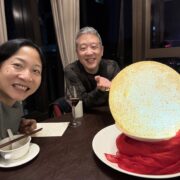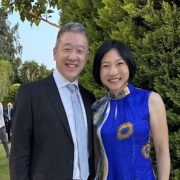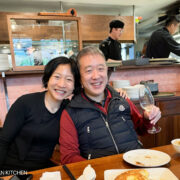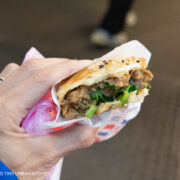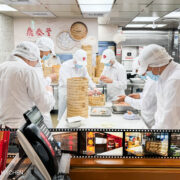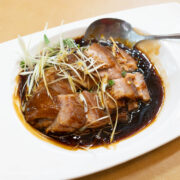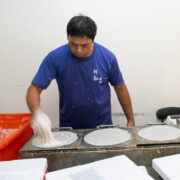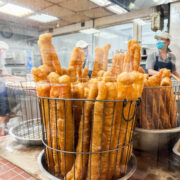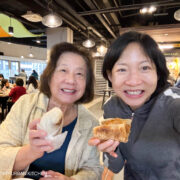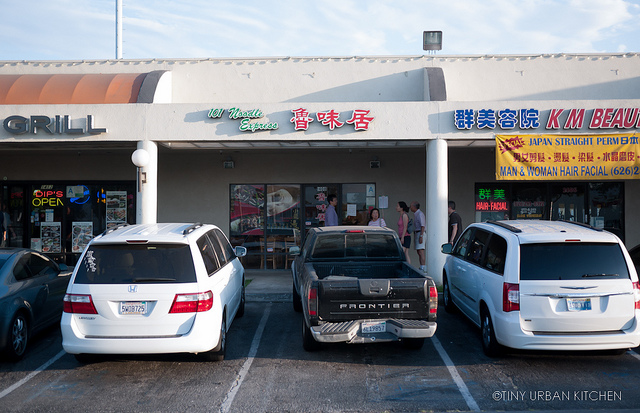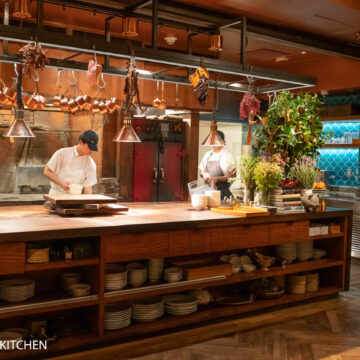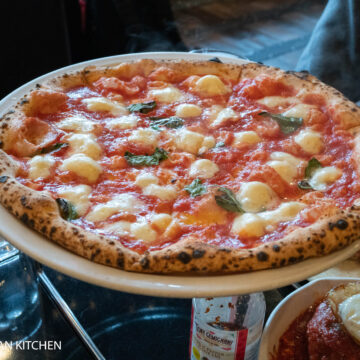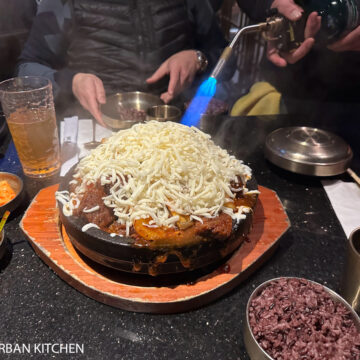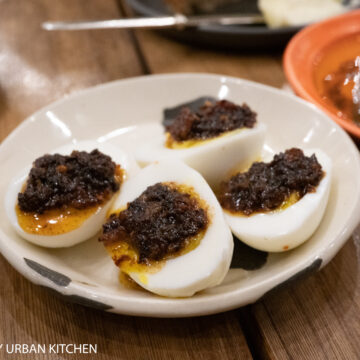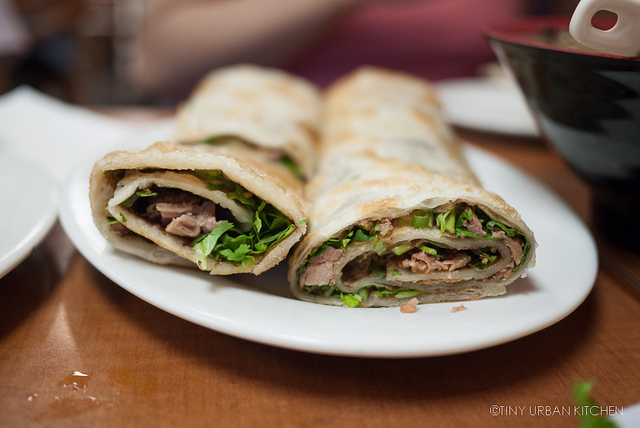
This is the first post in the Los Angeles Family Trip Series.
The greater Los Angeles area is really, really big.
Unlike here in Boston, where we can drive an hour north or south and essentially end up in another state, LA seems to sprawl on and on forever. In fact, people who live in Orange County think that Los Angeles city proper is quite a trek away; and similarly, places in the valley feel really, really far away from the oceanside cities.
I got my first taste of this when we visited LA as tourists.
As tourists, we aimed to hit many places in the general LA area, from the Getty Museum (sort of west) to the Huntington Library (pretty far east) and Orange County (to visit Bryan's family). We soon realized that, not only is the land huge, traffic is really, really bad. You have to really plan your days well and allot plenty of time to travel between destinations.
On the third day of our trip, we visited the Huntington Library (gorgeous place, by the way - you get to see one of the few original Gutenberg Bibles, as well as some of the most beautiful gardens I've ever seen). By around 2PM we were famished and headed over to Din Tai Fung for lunch.
Because traffic would become bad pretty soon, we decided it was better to stay out in the San Gabriel Valley area than to try to head back to Bel Air, where we were staying.
The San Gabriel Valley is really known for its Chinese food. It was hard to pick just one place for dinner. Did we want world-famous dim sum? Or maybe hand-pulled noodles? Or family-owned Taiwanese restaurants?
Bryan voted for noodles. After some research on our phones (while hanging out inside an Asian supermarket!), we settled upon 101 Noodle Express, a place famous for its beef roll and hand-torn noodles.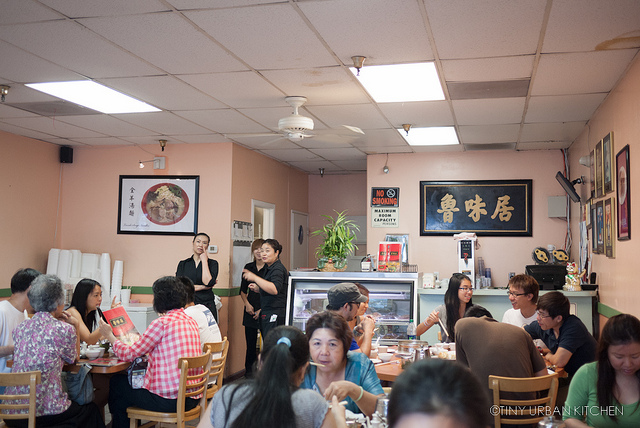
101 Noodle Express focuses on food from the Shandong region in the northeastern part of China. It started out in Alahambra selling a few signature dishes. As popularity for the place grew, it expanded to four locations - three in the San Gabriel Valley and one in Irvine (Orange County).
We visited the original, humble location in Alahambra.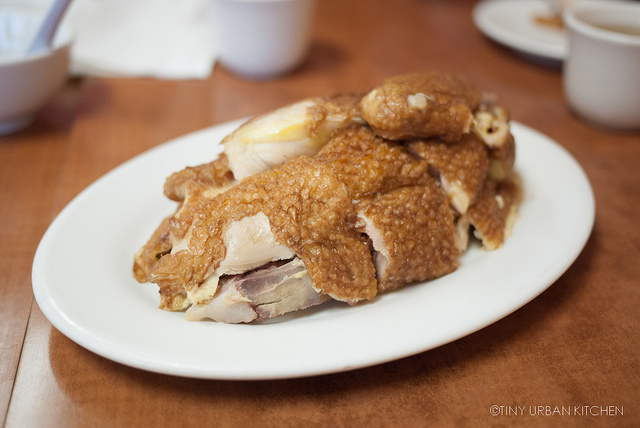
One of their famous signature dishes is the "De Zhou" chicken. The waitress strongly suggested that we order it, telling us that it was a very unusual dish and something we would not be able to easily find elsewhere.
De Zhou Chicken comes from the city of De Zhou in Shandong, China and was developed during the Qing Dynasty around the late 1800's. It involves deep frying a whole chicken until it's golden brown, and then braising the whole chicken in soy sauce mixed with water, mushrooms, and aromatic spices such as star anise, cardamon, and cloves.
The dish is a cold dish - something we did not necessarily expect. The flavors are enjoyable enough, though it didn't exactly taste that unique or interesting. Furthermore, the fried, braised chicken skin was a bit rubbery - not the most inviting texture to eat.
It's not the most beautiful dish to look at. In fact, Jonathan Gold, who still speaks highly of the dish, calls it a "gray, withered bird, which resembles the Ghost of Chickens Past".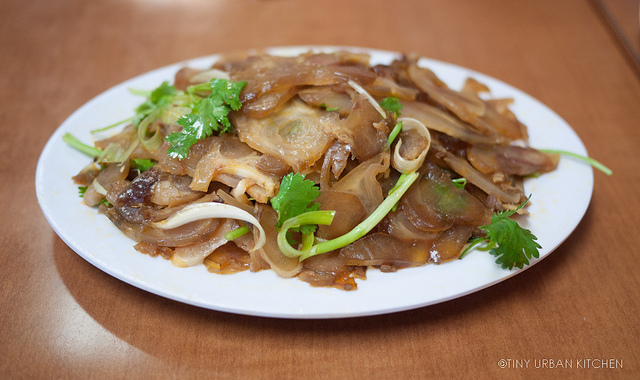
We ordered one additional appetizer, the Soy Marinated Pig Ears. These were great - chewy and flavorful.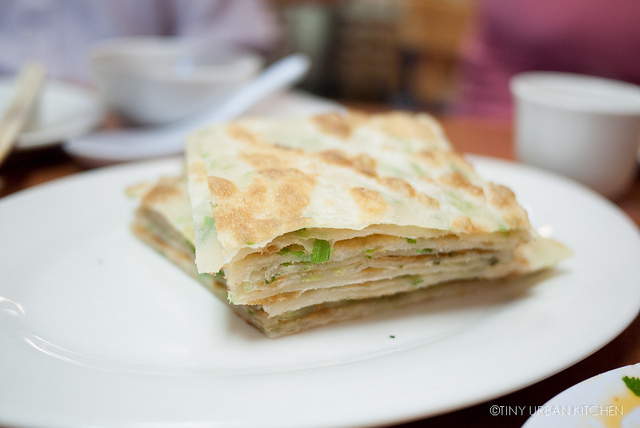
The Scallion Pancakes, which really resemble the exterior of their famous Beef Roll, were excellent. They were thin, delicate, full of fresh scallion flavors, and not at all greasy. If you're looking for something crunchy and deep fried, you won't find it here. This scallion pancake is almost moist, chewy, and very flavorful.
Bryan said it reminded him of the way his mom made scallion pancakes - healthy home cooking!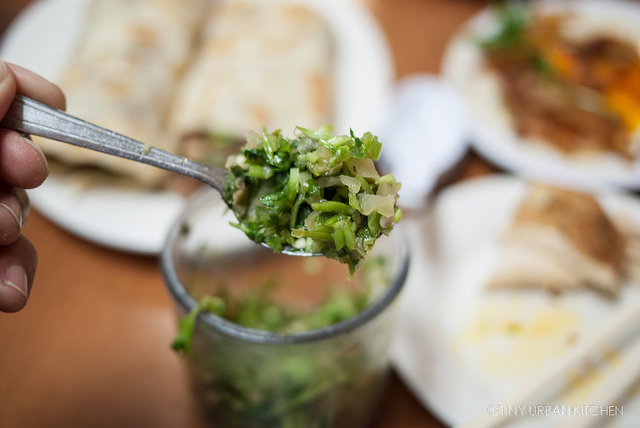
The free ginger, garlic, and scallion sauce that's just sitting at each table was an awesome flavoring agent and added a delicious zing to any dish.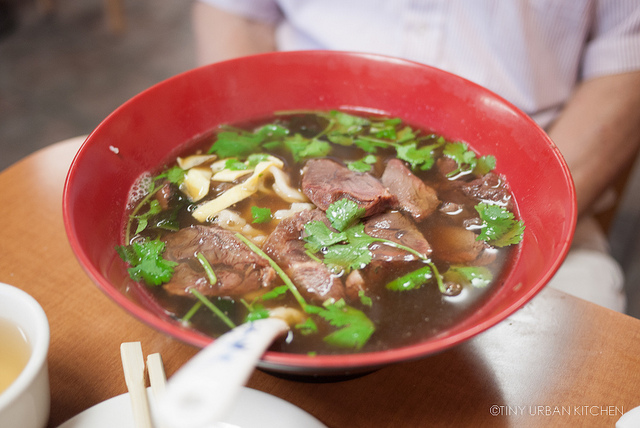
The Beef Noodle Soup with "Hand Torn" Noodles was the main reason we came. After all, the place is called "101 Noodle Express" and supposedly specializes in "hand-torn" noodles.
We soon discovered that "hand-torn" and "hand-pulled" are two very different things. These noodles were short and roughly shredded (thus hand-torn). Frankly, we were disappointed with the texture of the noodles, which were a little soft and mushy for our tastes. The beef noodle soup tasted fine, but we had really been hoping for some awesome "QQ" al dente noodles.
We also later found out that the hand-torn noodle was a recent addition to the menu, added in 2010. It wasn't one of the original specialty menu items that made them famous in the first place.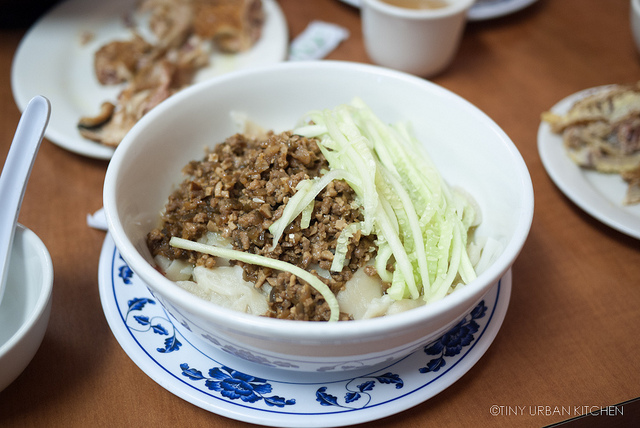
Other noodle dishes, like the Za Jiang Noodle, Da Lu Noodle, or Dan Dan Noodle, were all solid but used the same noodles, and thus were just a bit disappointing on the texture front. In fact, multiple times, Bryan said, "I like the version at Peking Restaurant better."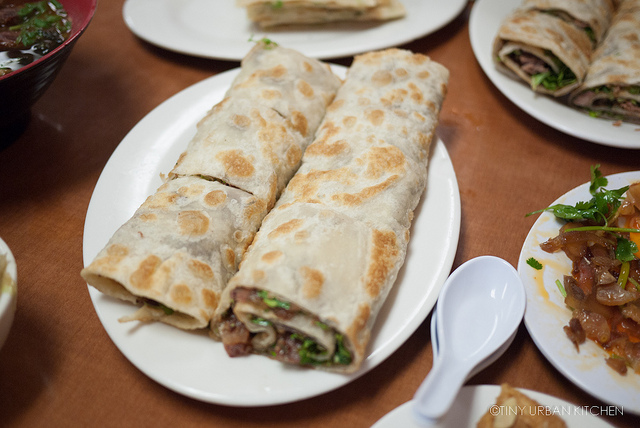
But then there was the famous Beef Roll and Pork Roll. Imagine flavorful, soy-braised meat, freshly chopped cilantro, scallions, and a special, slightly sweet sauce all wrapped up in a very thin scallion pancake.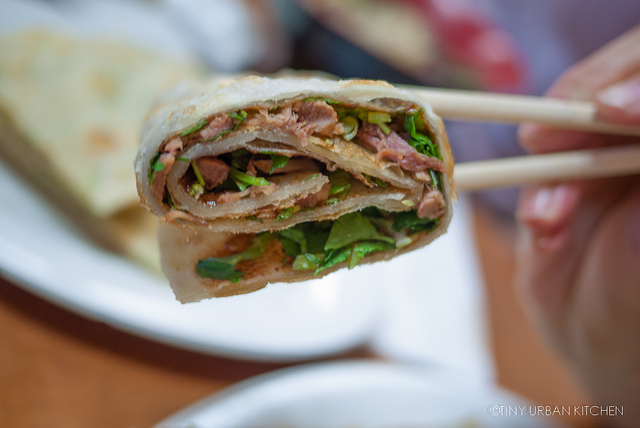
I can totally see why they became famous. The Beef Roll was fantastic - dare I say the best beef roll I've ever had? Yes, I do like the one at Peking Restaurant, but I like this one better. It's a bit smaller, the meat inside is more tender, and the outer scallion pancake is thinner and chewier. The overall package seems more refined and perfectly executed.
And I thought the beef roll was tastier than the pork roll, which was still OK, but just didn't compare.
If I came back, I'd just stop by for lunch and eat a whole beef roll. It's by far their best product and their claim to fame is well deserved. They should really just call themselves 101 Beef Rolls or something like that.
The owner claims to be dedicated to local and organic ingredients, with an aim to provide low-cost at the same time. The prices here were definitely really reasonable, with most dishes hovering in the $7-8 range.
Everything is pretty solid, and the scallion pancakes and especially the beef roll stand out. If nothing else, it's worth the trip just for a taste of that beef roll.
All Rights Reserved


